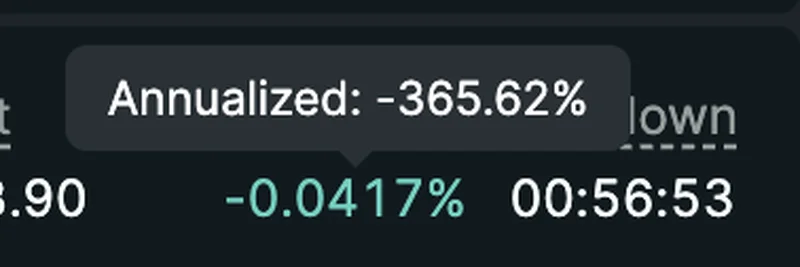Diving into the Latest Chopping Block Episode
Hey folks, if you're knee-deep in the world of crypto and blockchain, you've probably caught wind of the buzz around perpetual futures (or perps for short—these are derivative contracts that let you speculate on asset prices without an expiration date) and real-world assets (RWAs, which are basically traditional assets like stocks or commodities tokenized on the blockchain). Well, the latest episode of The Chopping Block podcast, hosted by industry heavyweights like Haseeb Qureshi, Robert Leshner, Tarun Chitra, and Tom Schmidt, brings some fresh insights straight from the front lines.
In this episode, they sit down with Kaledora, the founder of Ostium Labs, to break down how a model inspired by contracts for difference (CFDs—agreements where you trade the price difference of an asset without owning it) could make equity exposure more practical and user-friendly on-chain. If you're new to this, think of it as a way to get in on stock market action via blockchain without the usual headaches of high costs or clunky mechanics. The tweet promoting the episode here has timestamps to jump right into the juicy parts.
Kaledora's Crypto Twitter Stir-Up
Right off the bat, the crew dives into Kaledora's recent Twitter dust-up. It all started with her viral post pointing out the absurdity of sky-high funding rates (these are periodic payments between long and short positions to keep the perp price aligned with the spot price) for holding positions in things like the Nasdaq. She quipped, "Non-crypto people are going to love paying 360% a year to hold their Nasdaq position!"—and boy, did that ruffle some feathers in the perp trading community.
The backlash came from traders who live and breathe these markets, but Kaledora stood her ground, explaining that for normies (regular folks outside the crypto bubble), these volatile costs are a non-starter compared to traditional platforms where you can hold equities for a fraction of the price.
Perpetuals Meet Equities: A Match Made On-Chain?
Moving on, the discussion shifts to blending perps with equities. Kaledora argues that the current perp setup, while killer for volatile crypto assets like meme tokens (those fun, community-driven coins that can skyrocket or crash on a whim), falls short for stable, real-world stuff like stocks. The key issue? Unpredictable funding rates that can spike and eat into your profits.
This is where the CFD-like approach shines. Instead of variable funding, Ostium Labs opts for fixed, low borrowing costs—think 1-7% annually. It's more predictable and appealing for long-term holds, drawing from established TradFi (traditional finance) models like eToro's CFDs but with blockchain's transparency and resistance to censorship. For blockchain practitioners eyeing meme tokens, this could inspire similar tweaks, making perps less punishing during those wild pumps and dumps.
Funding Rates and Market Swings
The gang spends a good chunk unpacking funding rates and how they play out in market dynamics. In crypto, these rates get arbed (arbitraged) across venues, keeping things balanced. But for RWAs, there's less infrastructure, leading to higher volatility. Kaledora shares how Ostium ditched variable rates for RWAs after testing showed they scared off users without attracting enough arbers to stabilize the market.
If you're trading meme tokens on perps, you've likely felt the burn of 50%+ annual rates during bull runs. This episode highlights why fixed structures might be the future for broader adoption, especially as meme ecosystems mature and intersect with RWAs.
CFDs vs. Perps: The Showdown
Here's the meat: comparing CFDs to perps. CFDs offer simple leverage without the funding rollercoaster, dominating retail trading in regions where they're allowed. Perps, born in crypto's wild west, thrive on high vol but struggle with low-vol assets like equities. Kaledora posits that a hybrid—CFDs on-chain—could bridge the gap, providing deep liquidity from real markets and low costs.
For meme token enthusiasts, imagine applying this to your favorite dog-themed coin: better pricing, less unpredictability, and easier entry for newbies.
Political Twists: CZ's Pardon and Beyond
Shifting gears, they tackle recent news like CZ's (Changpeng Zhao, Binance's founder) potential pardon and the political fallout. With Trump in the mix, optics matter—could this signal a softer stance on crypto? They also touch on crypto's influence in midterms, pondering how regulatory shifts might boost RWAs and perps.
Echo x Coinbase and Crowdfunding Vibes
The episode rounds out with Echo's collab with Coinbase (likely streamlining on-chain payments or integrations) and a deep dive into crowdfunding platforms like MegaETH. Drawing analogies to luxury goods token sales, they explore how these could fund projects while rewarding early backers—much like meme token launches but with more structure.
Why This Matters for Meme Tokens
At Meme Insider, we're all about demystifying meme tokens, and this episode ties in perfectly. Perps are a staple for meme trading, but high funding can kill the fun. Kaledora's insights suggest evolving models could make them more accessible, potentially sparking the next wave of meme innovation on-chain.
Catch the full episode on YouTube, Spotify, or Apple Podcasts. What are your thoughts on CFDs vs. perps? Drop a comment below!


